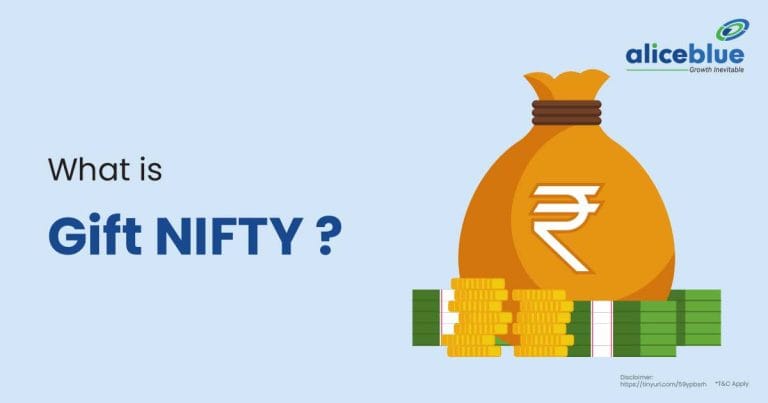Bank of Baroda Ltd’s fundamental analysis highlights key financial metrics including market capitalization of ₹1,27,138 crore, PE ratio of 6.68, debt-to-equity ratio of 12.1, and return on equity of 16.7%. These figures reflect the company’s financial health and current market valuation.
Content:
- Bank of Baroda Ltd Overview
- Bank of Baroda Financial Results
- Bank of Baroda Financial Analysis
- Bank of Baroda Company Metrics
- Bank of Baroda Stock Performance
- Bank of Baroda Peer Comparison
- Bank of Baroda Shareholding Pattern
- Bank of Baroda History
- How To Invest In Bank of Baroda Ltd Share?
- Bank of Baroda Limited Fundamental Analysis – FAQs
Bank of Baroda Ltd Overview
Bank of Baroda Ltd is a leading Indian public sector bank, offering a wide range of financial services. With a strong market presence and robust financial metrics, it plays a crucial role in India’s banking industry and global financial markets.
The company has a market capitalization of ₹1,27,138 crore and is listed on both the Bombay Stock Exchange (BSE) and National Stock Exchange (NSE). Currently, the stock is trading 18.0% below its 52-week high and 32.4% above its 52-week low.

Bank of Baroda Financial Results
Bank of Baroda Ltd’s financial results for FY24 showcase robust growth, with Total Income reaching ₹1,41,779 crore, compared to ₹87,780 crore in FY22. The Net Profit also surged to ₹18,869 crore from ₹7,933 crore in FY22, reflecting the bank’s strong financial performance over the years.
- Revenue Trend: Bank of Baroda Ltd’s Total Income rose significantly from ₹1,10,778 crore in FY23 to ₹1,41,779 crore in FY24, marking a strong revenue growth trajectory.
- Equity and Liabilities: The bank’s equity and liabilities structure continued to strengthen, supported by rising profits and prudent management, contributing to an improved financial position in FY24.
- Profitability: Bank of Baroda Ltd’s Pre-Provisioning Operating Profit (PPOP) increased from ₹30,191 crore in FY23 to ₹37,543 crore in FY24, indicating improved profitability.
- Earnings Per Share (EPS): The bank’s EPS rose to ₹36.29 in FY24, up from ₹28.82 in FY23, highlighting enhanced earnings performance and shareholder value.
- Return on Net Worth (RoNW): Bank of Baroda Ltd’s RoNW improved in FY24, reflecting better utilization of shareholder equity, though specific figures are not provided in the data.
- Financial Position: The bank’s financial position strengthened in FY24, supported by increased Total Income, enhanced profitability, and improved EPS, indicating a stable and growing institution.
Bank of Baroda Financial Analysis
| FY 24 | FY 23 | FY 22 | |
| Total Income | 1,41,779 | 1,10,778 | 87,780 |
| Total Expenses | 1,04,236 | 80,587 | 63,654 |
| Pre-Provisioning Operating Profit | 37,543 | 30,191 | 24,126 |
| PPOP Margin (%) | 26.48 | 27.25 | 27.48 |
| Provisions and Contingencies | 11,743 | 9,627 | 14,118 |
| Profit Before Tax | 25,799 | 20,565 | 10,008 |
| Tax % | 28.64 | 28.58 | 23.06 |
| Net Profit | 18,869 | 15,005 | 7,933 |
| EPS | 36.29 | 28.82 | 15.18 |
| Net Interest Income | 48,480 | 44,196 | 34,570 |
| NIM (%) | 3.39 | 3.53 | 3.22 |
| Dividend Payout % | 20.94 | 19.08 | 18.77 |
*All values in ₹ Crores
Bank of Baroda Company Metrics
Bank of Baroda Ltd is a major player in the Indian banking sector, showcasing strong financial metrics, including a market capitalization of ₹1,27,138 crore and a consistent return on equity (ROE) of 16.7%. The bank’s robust fundamentals highlight its stability and growth potential.
- Market Cap: Bank of Baroda’s market capitalization stands at ₹1,27,138 crore, reflecting its strong position in the Indian banking industry.
- Book Value: With a book value of ₹231 per share, Bank of Baroda’s stock is priced close to its intrinsic value, indicating a balanced valuation. This figure is essential for investors assessing the bank’s financial health and stability.
- Face Value: The face value of Bank of Baroda’s stock is ₹2.00 per share, which serves as the nominal or par value of the stock. This small amount is fundamental in calculating dividends and stock splits.
- Turnover: The asset turnover ratio of 0.07 indicates how efficiently Bank of Baroda uses its assets to generate revenue. While lower than some sectors, this is typical for banks, reflecting the nature of financial operations and asset management.
- PE Ratio: With a price-to-earnings (PE) ratio of 6.68, the Bank of Baroda is trading at a relatively low multiple compared to its earnings. This suggests that the stock may be undervalued, providing potential growth opportunities for investors.
- Debt: Bank of Baroda’s debt stands at ₹14,53,761 crore, with a debt-to-equity ratio of 12.1. This indicates a high leverage level, typical in the banking sector, reflecting the bank’s extensive lending and borrowing activities.
- ROE: The return on equity (ROE) of 16.7% demonstrates Bank of Baroda’s ability to generate profits from its shareholders’ equity. This strong ROE reflects the bank’s efficient management and profitable operations.
- EBITDA Margin: Bank of Baroda’s EBITDA margin of 15.1 indicates the profitability of its core operations before accounting for interest, taxes, depreciation, and amortization.
- Dividend Yield: The bank offers a dividend yield of 3.09%, providing a steady income stream to its investors. This yield reflects Bank of Baroda’s commitment to returning value to shareholders while maintaining financial stability.
Bank of Baroda Stock Performance
The table highlights Bank of Baroda’s return on investment (ROI) over different periods, with a 20% return over 5 years, 45% over 3 years, and 28% in the past year. These figures demonstrate the bank’s strong performance and the potential for significant returns for investors.
| Period | Return on Investment (%) |
| 5 Years | 20% |
| 3 Years | 45% |
| 1 Year | 28% |
Example:
If an investor, A, invested ₹1,00,000 in Bank of Baroda five years ago, the investment would have grown to ₹1,20,000, yielding a 20% return.
If the same amount was invested three years ago, the return would be ₹1,45,000, reflecting a 45% gain.
Over the past year, A’s investment would have increased to ₹1,28,000, achieving a 28% return.
Bank of Baroda Peer Comparison
Shareholding Pattern of Bank of Baroda reveals its market strength with a current market price (CMP) of ₹245.85 and a market capitalization of ₹1,27,137.94 crore. The bank boasts a PEG of 0.08, a 3-month return % of -8.92%, and a 1-year return of 26.86%, reflecting its solid financial performance. Bank of Baroda faces strong competition from peers like the State Bank of India, Punjab National Bank, Indian Bank, and Canara Bank.
| S.No. | Name | CMP Rs. | Mar Cap Rs.Cr. | PEG | 3 mth return % | 1 Yr return % |
| 1 | State Bank of India | 803 | 716871.04 | 0.1 | -1.1 | 43.19 |
| 2 | Punjab Natl.Bank | 113.57 | 125106.83 | 0.44 | -9.25 | 82.15 |
| 3 | Bank of Baroda | 239.45 | 123828.27 | 0.08 | -8.92 | 26.86 |
| 4 | I O B | 59.71 | 112959.88 | 1.85 | -3.07 | 96.74 |
| 5 | Canara Bank | 105.65 | 95777.57 | 0.07 | -7.08 | 60.29 |
| 6 | Union Bank (I) | 116.7 | 89061.79 | 0.14 | -17.06 | 26.57 |
| 7 | Indian Bank | 550.35 | 74130.16 | 0.09 | 1.94 | 40.7 |
Bank of Baroda Shareholding Pattern
The shareholding pattern of the Bank of Baroda shows a stable promoter holding of 63.97% in June 2024. Foreign Institutional Investors (FIIs) have decreased their stake from 12.4% to 11.45%, while retail and others have increased from 7.32% to 8.55%.
| Jun 2024 | Mar 2024 | Dec 2023 | Sept 2023 | |
| Promoters | 63.97 | 63.97 | 63.97 | 63.97 |
| FII | 11.45 | 12.4 | 12.27 | 12.39 |
| DII | 16.03 | 16.3 | 16.01 | 16 |
| Retail & others | 8.55 | 7.32 | 7.76 | 7.64 |
*All values in %
Bank of Baroda History
Bank of Baroda was established on 20th July 1908 in Vadodara, Gujarat, as a state-owned banking and financial services organization.
Over the years, it has grown into India’s leading public sector bank, offering a vast network of 8,200+ branches and 10,000+ ATMs across the country. Internationally, the bank has expanded to 20 countries with 100 branches and offices.
Bank of Baroda also operates several wholly-owned subsidiaries, including BOB Financial Solutions, BOB Capital Markets, and Baroda Asset Management India. Additionally, it has joint ventures in life insurance and infrastructure financing and owns a 98.57% stake in The Nainital Bank.
How To Invest In Bank of Baroda Ltd Share?
Investing in Bank of Baroda Ltd shares is a straightforward process:
- Open a Demat Account: Start by opening a Demat and trading account with a reliable brokerage firm like Alice Blue.
- Complete KYC: Submit necessary documents for KYC verification.
- Fund Your Account: Deposit funds into your trading account.
- Buy Shares: Search for Bank of Baroda Ltd shares and place your buy order.

Bank of Baroda Limited Fundamental Analysis – FAQs
Bank of Baroda Ltd’s fundamental analysis reveals a market capitalization of ₹1,27,138 crore, a PE ratio of 6.68, a debt-to-equity ratio of 12.1, and a return on equity of 16.7%, indicating strong financial health and market valuation.
The market cap of Bank of Baroda Ltd as of August 12, 2024, is approximately ₹1,27,138 crore. This value reflects the company’s strong market position in the Indian banking industry.
Bank of Baroda Limited is a major Indian public sector bank, headquartered in Vadodara, Gujarat. Established in 1908, it offers a wide range of financial services with a vast network in India and an international presence across 20 countries.
Bank of Baroda is a state-owned enterprise, with the Government of India as its primary shareholder. The government holds a majority stake in the bank, making it a public sector entity under Indian state ownership.
The main shareholders of the Bank of Baroda include the Government of India, which holds the largest stake, followed by Foreign Institutional Investors (FIIs), Domestic Institutional Investors (DIIs), and retail investors. The government is the dominant shareholder with a significant majority.
Bank of Baroda operates in the banking and financial services industry. It provides a range of services including retail and corporate banking, investment banking, asset management, and insurance, serving both individual and institutional clients.
To invest in Bank of Baroda Ltd shares, open a brokerage account, complete the KYC process, deposit funds, and place a buy order through your broker. Monitor the stock’s performance and manage your investment according to your financial goals.
We hope you’re clear on the topic, but there’s more to explore in stocks, commodities, mutual funds, and related areas. Here are important topics to learn about.
Disclaimer: The above article is written for educational purposes, and the companies’ data mentioned in the article may change with respect to time The securities quoted are exemplary and are not recommendatory.








